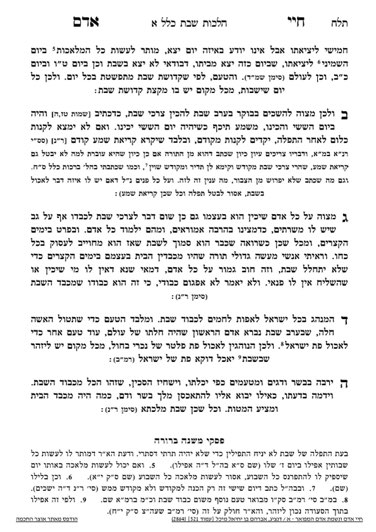We are continuing in siman 4, where the Chayei Adam has been discussing the importance of baking challah for Shabbos. One of the reasons mentioned by the Chayei Adam about the importance of baking challah was in order to separate challah as an atonement for the sin of Chavah (see shiur S0013). Today, we will discuss some of the relevant halachos regarding separating challah from dough.
Historically, the challah separated from the dough was given to the cohen. However, since both the challah and cohen are tamei nowadays, the challah is burned.
It is important to note that the language of the bracha is “to separate challah from the dough”, because the chiyuv to separate the challah only begins once the mixture is in a dough state, not while it is still flour. Thus, even if one has a large amount of flour that they wish to eventually make into dough, if they separate the challah before water has been added, it does not work.
Next, we will discuss the amount of dough one must make in order to figure out whether one is chayav in the mitzvah or not. The actual amount from the Torah is by volume of the dough. However, if we were to measure the calculation by volume of dough, it would be difficult to make the calculation, since the dough rises and changes its size. Therefore, we calculate the amount which requires the separation of challah either based on the amount of flour used, or based on the weight of the flour.
There is a general disagreement between the Chazon Ish and Rav Avraham Chaim Naeh regarding how to convert the measurements from the Torah to our current measurement systems. Because of the disagreement, the approach of the poskim is to give two calculations. The first is a minimum amount, an amount at which one is obligated to separate challah, but does not make a bracha out of the safeik that maybe we need to be machmir for the larger measurement. The second is a larger amount at which one would make a bracha according to both opinions.
According to the Chazon Ish, the amount of dough which requires the separation of challah is five pounds of flour. If one uses 2 pounds 11 ounces (slightly more than half a standard bag of flour), one separates challah but does not make a bracha.
We must remember that the term challah used in this context does not refer to the challah eaten on Shabbos, but to the amount separated from a dough which, nowadays, is specifically not eaten but rather burned. One of the suggestions why we refer to our Shabbos bread as challah, is to intimate that it was from a dough large enough to be obligated in separating challah.
We will discuss the opinion of Rav Chaim Naeh in the next shiur, be’ezras Hashem.
Summary
The mitzvah of separating challah only starts once the water has been added and a dough is created.
The amount of dough which is required to be chayav in challah is difficult to measure; we calculate it based on the flour used in the mixture.
The mitzvah is dependent on a certain volume, but we usually convert that into a weight.
According to the Chazon Ish, the amount of dough which requires the separation of challah is five pounds of flour. If one uses 2 pounds 11 ounces (slightly more than half a standard bag of flour), one separates challah but does not make a bracha.



